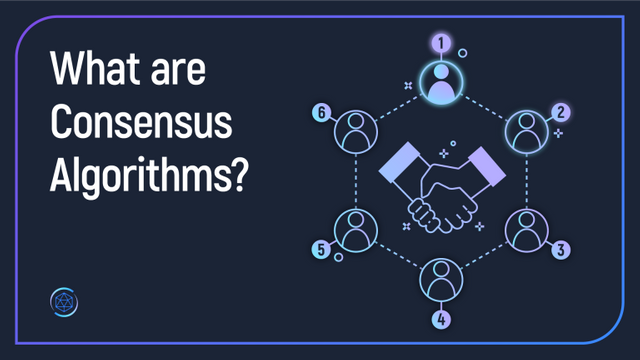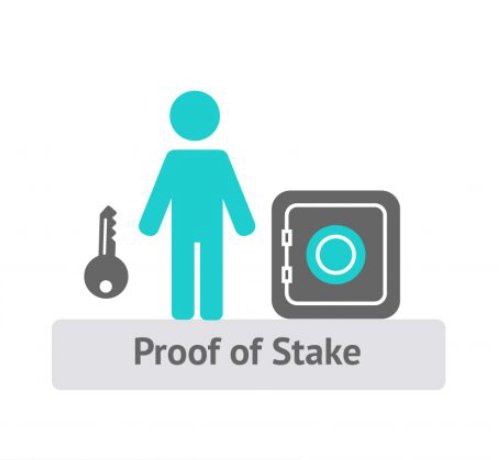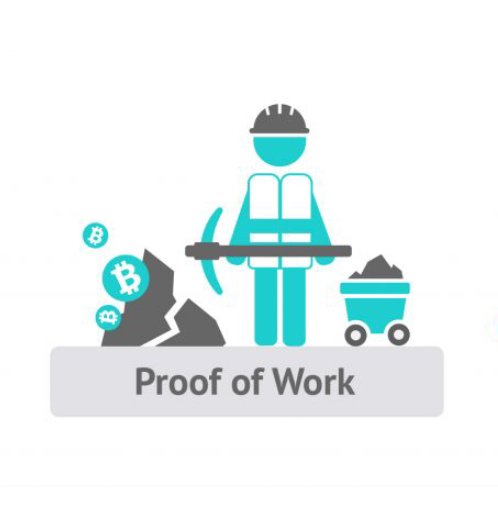Different types of Consensus Mechanisms - Steemit Crypto Academy Season 4 - Homework post for Task 6 by @acbaby
QUESTION 1
What is the difference between PoW and PoS?
Advantages and disadvantages?
Which one is better in scaling capacity?
Examples?

INTRODUCTION
Hi guys, hope we are all holding up pretty well and ready to ride along with me while we understand everything about PoW and PoS. Out of the three questions I have chosen the first question which I have made in bold above. I have divided this question into different factions to ease understanding. Seat tight while we take off.

QUESTION 1a:
What is the difference between PoW and PoS?
To understand the difference between PoS and PoW I will like us to firstly understand what a consensus mechanism is all about.
 Source
Source
The blockchain technology is build with a central aspect which is a ledger that records all previous transactions on a blockchain. This distributed ledger is not stored or controlled by a single authority but rather is found across computer networks around the world. The distribution ledger makes sure all networks agree collectively with whatever is recorded on the ledger making blockchains linked together. All of this is known to be carried out by consensus mechanisms.
There is a consensus mechanism behind the foundation of many cryptocurrencies. Therefore the are many different kinds of consensus mechanisms on the blockchain technology. The main function of a consensus mechanism is to ensure that all transactions recorded by the distributed ledger are first of all verified and valid. This process is mostly carried out by developers where they get rewards at the end of solving any problem. Verifying the record of transactions keeps cryptocurrencies free from double spending and the addition of invalid data to the distribution ledger.
I think with the above explanation one can understand what consensus mechanisms are. We can now move forward to understand what PoW and PoS are. These are the most common and popular consensus mechanisms applicable on the blockchain. They both serve the same purpose but with different methodologies of application which makes them different from each other.
To differentiate these consensus mechanisms, I will give good descriptions of the methodology of each. POW means Proof of Work and PoS means Proof of Stake. I will start by explaining what PoS is and later PoW.

Proof of Stake
PoS stands for Proof of Stake and it is for the purpose of verifying and validating transactions as every other blockchain consensus mechanism. The difference comes from the methodology used in PoS which makes it unique.

Proof of Work
PoW which stands for Proof of Work is know to had existed for Ben before the first existing cryptoasset (Bitcoin).
With PoW miners don’t use any coin or token but rather they verify transactions that have been put together in a memory pool. This verification is done in the form of solving a mathematical puzzle and the first miner (developer) to solve this problem by verifying a complete memory pool is rewarded with the block’s (memory pool) transaction fees and with a minted BTC. This memory pool is added or attached to the bitcoin blockchain.
To solve this mathematical puzzle requires a lot of work and is in such a way that one cannot trick the system but work it out. It is found to be asymmetrical making it open to verification upon solving the problem. Unlike PoS, the only way to miners use to improve their odds is by having an additional computational power which is very cost effective as it requires high energy and capital. These puzzles have parameters that makes it to be periodically updated with time (block time). Most at times the block time depends on the number of blocks already existing. Taking bitcoin as an example, the block generation time is about 10 minutes and if this time reduceses, the puzzle becomes more difficult and if the time increases it becomes less difficult compared to the previous block time. All these aspects incur the use of very high energy to solve the puzzle.

With the understanding of the methodology of PoW and PoS it is quite easy to differentiate them. The table below clearly differentiate them.
| PoS | PoW |
|---|---|
| Requires 51% of coins on the network | Requires 51% of computation power |
| --------- | ---------- |
| Rewards are by transaction fees | Results are in newly Minted coins |
| --------- | ---------- |
| Investment based on coin purchase | Investment based on hardware purchase |
| --------- | ---------- |
| Validators must support and own the token they are verifying | validators must have the highest computation power |
| --------- | ---------- |
| Do not inherently discourage forking | Naturally discourage constant forking |
| --------- | ---------- |
| Stakes an amount of a token | Solves a mathematical puzzle |

QUESTION 1b:
Advantages and disadvantages?
Advantages and disadvantages of PoS
| Advantages | Disadvantages |
|---|---|
| Requires lower energy | Encourages forking |
| --------- | ---------- |
| The PoS consensus mechanism is less expensive compared to its counterpart PoW | May allow double spending |
| --------- | ---------- |
| Since PoS require less expenditure, it allows the validators with enough funds to promote the network | No new coins are rewarded |
| --------- | ---------- |
| Allow miners to make use of their assets | PoS is centralized and less secured |

Advantages and disadvantages of PoW
| Advantages | Disadvantages |
|---|---|
| Discourages forking | Requires high energy |
| --------- | ---------- |
| Rewards are given by newly minted coins | Requires very high computation power |
| --------- | ---------- |
| Produces a decentralized network | Not environmentally friendly to users |

QUESTION 1c:
Which one is better in scaling capacity?
Before I answer this question, I will like to explain the meaning of the scalability of a consensus mechanism on any blockchain.
Scalability here simply refers to the ability of a network system to sustain higher number of occurrences or the ability of a computing process to produce or be used in a wide range of capabilities. So a consensus that satisfies this between PoW and PoS should be more scalable.
It is difficult for PoW algorithms to adapt to mainstream use since there is continuous adoption of cryptocurrencies day in and day out causing an increasing number of transactions. Cryptocurrencies built on a PoW consensus mechanism have issues with fast transactions due to small block sizes which often slows transactions on such blocks especially when they are on the mainstream. Even though attempts to remedy such situations has been made, they all remain temporal and at some points off-chain which is not a good thing when looking at the whole idea of blockchain technology.
Proof of Stake based projects have seen much success in tackling scalability issues. They have gained better latency using less computation, storage and bandwidth. Some Proof of Stake systems randomly choose validators for each round and this validators at the end agree with each other whether the block becomes part of the chain or not. This has led to increase consistency between validators of PoS systems.
To round up, PoS offers more solutions to scalability problems compared to PoW and so PoS is better in scailing capacity.

QUESTION 1d:
Examples?
The table below contains some examples of PoW and PoS coins.
| PoW cryptocurrencies | PoS cryptocurrencies |
|---|---|
| Bitcoin (BTC) | Peercoin |
| --------- | ---------- |
| Litcoin (LTC) | Cardano (ADA) |
| --------- | ---------- |
| Dogecoin (Doge) | Algorand (ALGO) |
| --------- | ---------- |
| Ethereum (ETH) | Nxt |
| --------- | ---------- |
| Zcash (ZEC) | Polkadot (DOT) |
| --------- | ---------- |
| Dash (DASH) | Solona (SOL) |
| --------- | ---------- |
| Bitcoin Cash (BCH) | Tron (TRX) |
| --------- | ---------- |
| Monero (XMR) | EOS |
| --------- | ---------- |

CONCLUSION
Generally blockchains are made up of different blocks joint together with a primary block known as the genesis block. Therefore every blockchain has its genesis block. Blocks are validated by developers after verifying transactions on the block using a consensus mechanism. The most common consensus mechanisms on blockchain are PoW and PoS. These mechanism are for the same purpose but they have different methodologies. PoW is the oldest consensus mechanism in the crypto world and so it is the mechanism practiced in validating blocks on the bitcoin blockchain. PoW is based on computation power of developers while PoS is another mechanism whose protocol is based on the coin capitalization held by a developer. It has been observed that PoS has a better scaling capacity.
A big thank you to my professor @sapwood
Thanks for reading
Steem on


